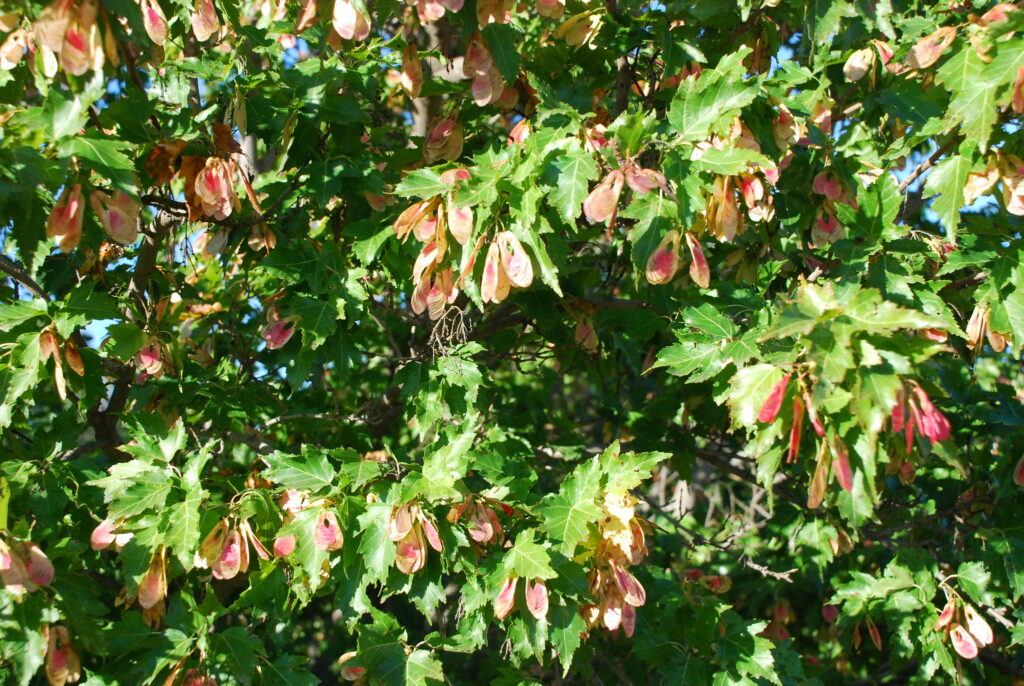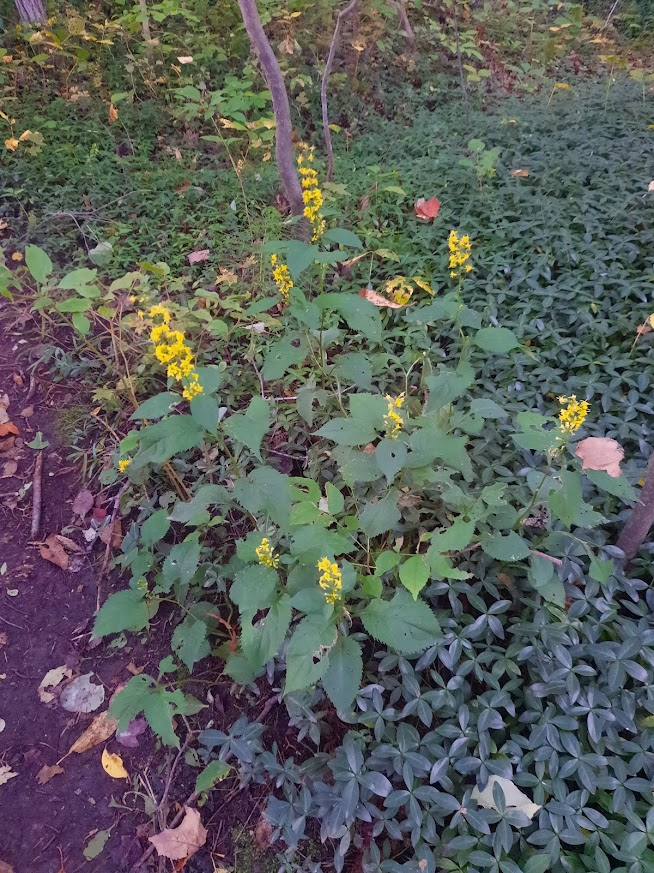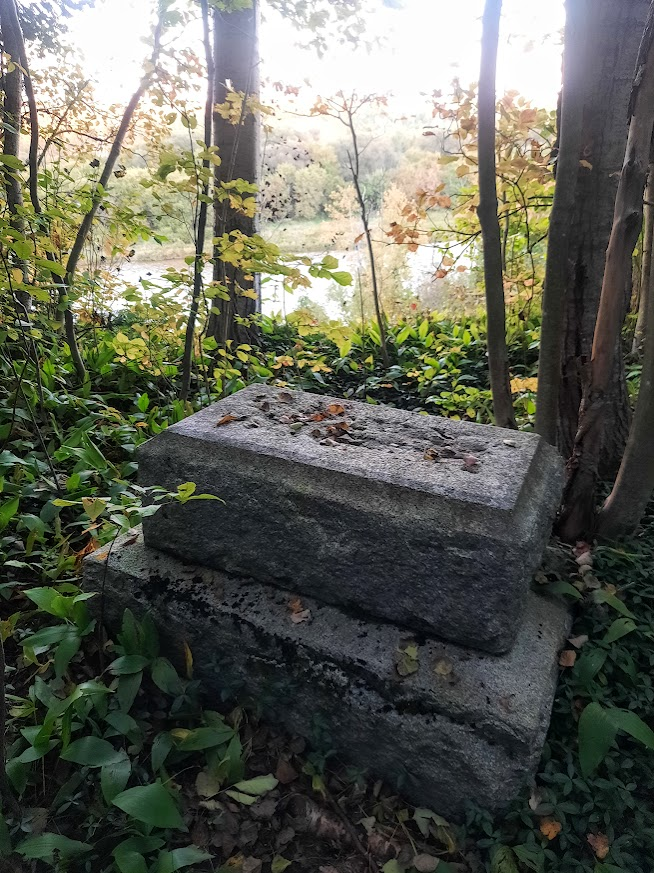This article is one of many stories we receive regarding invasive plants, the harm they do and the cost of removal in labour and time. This is a testimony to why invasive plants like periwinkle should not be sold.
The Perils of Periwinkle
by Anna Thomas. Republished with permission from the East Gwillimbury Gardeners newsletter April 2023.
When we moved into our house 25 years ago, there was a huge patch of periwinkle off the kitchen window. At the time, I didn’t know it was invasive, but I wasn’t particularly fond of the plant and we wanted to regrade the area so not knowing any better, we turned it over and covered it with about 2-3 feet of soil. Luckily, for us this killed off that area. Unfortunately, I didn’t remove it all and let it spread on the periphery. At first it was a slow spread and so I didn’t worry about it much but occasionally pulled some out.
Twenty five years later and it had spread beyond anything I could have imagined. On our 7 acre property I found 5 very large areas growing about 100 feet from the house and into the forest. Also, the area I left by the house had spread about 20 feet to the north and south of the original spot. It was taking over other garden beds and strangling other plants. Last December we went for a stroll around the periphery of our property and found another area on the alternate side of the property. This was heartbreaking as I thought I had identified all the areas where it needed to be removed. Obviously, this plant spreads not just by runners but also it seeds itself with the help of birds.
Over the last 3 years I have been removing periwinkle with a vengeance. I’ve managed to clear the areas by the house which has allowed me to replant with a mixture of native and non native perennials. In those areas there has been little to no regrowth. If there are no plants you want to keep it’s fairly easy to pull out and then lightly fork over the area and remove the roots which are quite distinctive. However, if you have an area with plants you want to keep you will need to dig up those plants, bare root them and pot up until you have the area cleared. Under most circumstances, I would remove all that I can and then plant with annuals for a year. If you can’t wait and need to replant, then you need to check on a regular basis and remove any stragglers that return. Of all of the invasives, periwinkle is probably one of the easier to remove.
My preference for removal is to dig it out as the roots are fairly shallow and you see immediate results. However, it is possible to solarize if you are willing to leave covered for a few years. To do this it needs to be in a sunny area. Damp down the area thoroughly and cover with clear plastic and ensure the plastic overlaps the edges of the periwinkle. Hold down the edges with bricks or old logs. This will kill everything under the plastic including any beneficial organisms in the soil and insects so this would be a last resort method in my opinion. You can also cover with cardboard but when doing this it is best to clear the periphery and then make sure the cardboard overlaps the cleared area. I’ve tried this in one area that was a bit more difficult to access and unfortunately I didn’t clear the periphery well enough and so I continue to get some escaping from under the cardboard. Lesson learned!
Unfortunately, I’m still battling a large area in one of our meadows (it was originally about 12 x 30 feet but I’m down to the last 5 x 10 ft of periwinkle to remove) and another area under some cedar trees. These areas are more difficult as the periwinkle is interspersed with other plants and roots. It requires constant vigilance to remove any regrowth but I’m hoping that I can declare myself periwinkle free in 2023!
How to dispose of the periwinkle you have dug out? Well, don’t put it in your regular composter for one! You can put it out with yard waste but you can’t always be sure that the municipal compost facilities are hot enough to kill the periwinkle and you run the risk of it being given away to other unsuspecting gardeners. Ideally, you would put it in a garbage bag in full sun for a few weeks to kill it. After this time, it can be put out with your regular garbage. I am lucky enough to have a dedicated bin that I use just for invasives. It is a 4 x 4 bin that is contained so nothing can escape and I add all invasives to this bin, including garlic mustard, goutweed and lily of the valley.
Of utmost importance is to ensure that other gardeners are aware of the invasiveness of periwinkle and are warned against buying it or sharing plants. There is hope that at some time in my life this and other invasive plants will be banned from being sold in the nursery trade as there are too many unsuspecting gardeners who are unaware of its invasive properties.
















